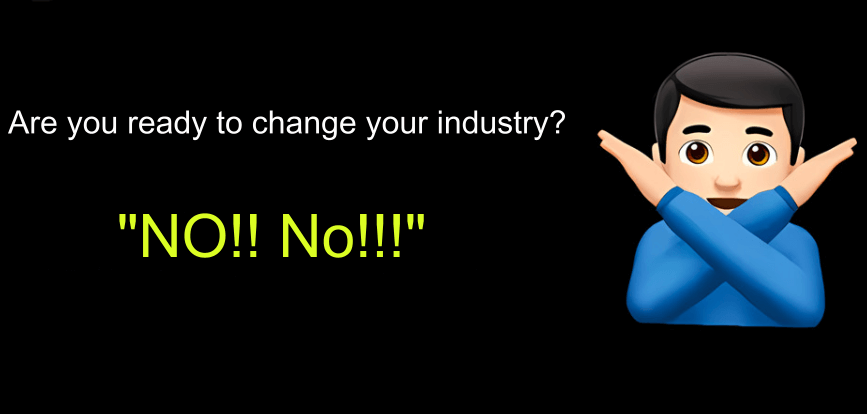In today's increasingly competitive job market, how do you stand out among your colleagues and become a key candidate for promotion and career growth? This article will share the fundamental logic behind promotions in large companies, explore common promotion scenarios, and discuss how HR evaluates talent.
Recently, our company made some adjustments, and a few of my close friends were promoted.
One of them was promoted from team leader to department head, managing a team much larger than mine—50 or 60 people.
Another was transferred to a new department and became the head responsible for a major area of network security.
A third friend, originally a project manager handling single projects, was promoted to supervise multiple projects.
They all share one thing in common: they are very young, all born after 1995.
In this article, I want to discuss why these young individuals have skyrocketed in their careers and explore the fundamental logic behind promotions in large companies.
Let’s begin.

01 What Is the Logic Behind Promotions?
There are essentially four scenarios that lead to promotions: business expansion, personnel adjustments, position vacancies, and structural adjustments.
Business Expansion
When the company is doing well and looking to explore new business opportunities, it naturally needs someone to take charge. This creates a promotion opportunity.
Personnel Adjustments
Sometimes, the person in a current position is underperforming and needs to be replaced, transferred to another department, or has left the company. In such cases, the position becomes available and needs to be filled.
This is what is often referred to as "a job for every person."
Position Vacancies
A position may already be vacant or temporarily handled by a more senior leader. When the right person comes along at the right time, the position is filled, similar to the second point.
Structural Adjustments
The company might create a new role that didn’t previously exist. For example, previously, there might not have been a specific role for managing quality, but this year a dedicated quality management position was created, leading to promotions in that area.
These are the four main scenarios that lead to promotions.
So, promotions depend heavily on luck and opportunity. For example, if the company is scaling back its business, and no new opportunities arise, it's hard for new employees to advance if upper management remains stable.
As the saying goes, "a job for every person."
So, what can you do? Does this mean new employees have no chance?
Don’t worry—there are always more solutions than problems. Luck and opportunity can be pursued, and you can "change your fate" for yourself.
I’ll elaborate on this later in the article.
Now that you understand the basic logic of promotions, let’s assume there is a position vacancy. What’s the next step?
This is where HR’s talent evaluation process comes into play.
02 How Does HR Evaluate Talent?
"Xiao Zhang, the company is setting up a new department, and we need a manager."
When senior management decides on a vacancy, they notify the HR head to begin the talent evaluation process.
HR will then ask several questions:
"What does this department do?"
"What kind of skills are required?"
"What experience is necessary?"
Once these questions are clarified, HR knows how to proceed. I’ll outline their general selection logic:
Job Fit: Is the candidate’s experience relevant to the role?
Past Performance: Have they consistently achieved high performance over the past two to three years?
Relevant Skills and Experience: Do they possess the necessary skills and experience for the role?
Other Requirements: This may include potential, youthfulness, loyalty, or other factors depending on the company.
After filtering candidates based on these criteria, the remaining pool is usually quite small.
HR will then review the resumes and previous evaluations of these candidates, quickly forming a list of potential candidates.
This is the general process HR follows for talent evaluations.
What are the most important factors?
There are two key points:
Past Performance: This is the primary indicator of whether you can handle the responsibilities of the current role. If your performance has been consistently poor, you won’t even be considered for a promotion.
Labeling: This means that when a particular situation or event is mentioned, people think of you.
This is the main focus of this article.
Once HR has a candidate list, what else do they consider?
Team Stability: How will the candidate impact the team once they join? Can they manage the team effectively?
Promotion Level: Is this a direct promotion or a cross-level promotion?
Department Type: Is this a strategic department or an ordinary one?
HR will then create a ranked list of candidates, with recommendations for who should be prioritized.
What is the reasoning here?
HR doesn’t want to appoint someone who will disrupt the team or cause internal conflict, nor do they want to promote someone who might not command respect.
For strategic departments, the company wants the best of the best, while in ordinary departments, there’s less risk, so newer employees may be considered.
03 What Is Labeling?
When you think of a colleague, what is the first evaluation that comes to mind? What achievements or abilities stand out?
For example, one of my friends was promoted to head of security for a specific business unit.
What were his labels?
Professional Skills: Network security.
Strong Performance: Consistently high.
Leadership: Managed a small team before, with decent management skills.
Technical Expertise: Tested and analyzed various security devices and knew when to use them.
Experience: Participated in several client security defense projects with high customer satisfaction.
Personality: Good communication skills, works well across departments, and had positive feedback from colleagues.
When you think of him, what comes to mind?
He’s an experienced network security expert, knowledgeable about devices and capable of implementing security measures.
He has good interdepartmental relationships, which is important for pushing business units to make changes.
He has some team management experience, so transitioning to a new department should be relatively low-risk.
This is what labeling is.
Take a moment to reflect: what labels do you carry in your company?
04 How Do You Label Yourself?
Once you understand labeling, it becomes easier to brand yourself.
There are good labels and bad labels.
Bad labels might be:
"This person has a bad temper and has yelled at colleagues before."
"This person has had major management issues, causing the team’s turnover rate to skyrocket."
Once bad labels stick, it’s hard to shake them off.
First, you need to avoid bad labels.
Next, you need to develop good labels for yourself.
Good labels generally fall into two categories: personality/character and skills/project experience.
They are often described together.
For example:
Personality/Character: "He’s highly motivated, with strong hands-on abilities and a willingness to take on challenges."
Skills/Project Experience: "In a risky project, he was assigned to fix a major problem, spent several days researching, and successfully resolved the issue."
The blue text describes personality and character, while the red text describes skills and project experience.
When considering someone for promotion, we don’t just look at their personality or spirit; we also assess their ability to produce results. If someone has a great personality but poor output, it amounts to nothing.
So, in your daily projects, refine your labels by demonstrating key actions, behaviors, and spirit, while ensuring good results. This will help shape your personal brand.
I recently had a conversation with a high-performing colleague in my department. His performance was excellent, and he had completed several projects successfully. During our discussion, I noticed he had many ideas and suggestions for improvement.
I labeled him as: "high performer," "capable," "clear thinker," and "innovative."
In daily work life, people are constantly labeling those around them. What you need to do is make sure they assign you the labels you want.
That’s the conclusion of this article.
If you want to get promoted, remember three things: perform well, create your labels, and wait for the right opportunity.
The first two are within your control. If you do them well, all you need to do is wait for the right chance!







